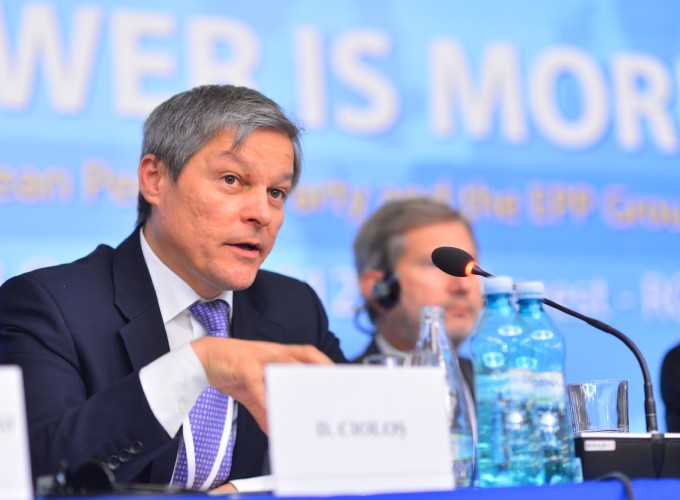Blog post published by presidential-power.com
On November 4, Romania’s prime minister stepped down following huge protests triggered by a tragic accident at a Bucharest nightclub that killed 60 people. This was the second time since 2012 that a head of government was toppled by street demonstrations. However, while the 2012 protests targeted the far-reaching anti-austerity measures imposed by the government, this time around the protesters’ anger was directed against the entire political class without any discrimination among political parties. The result was the formation of Romania’s first technocratic government.
New format for government formation talks
Under pressure for many months over accusations of plagiarism and corruption but without direct responsibility for the terrible accident, PM Ponta’s prompt resignation after the first day of protests was seen as the easy way out for himself and the ruling party. During the consultations with political parties convened by the head of state, the opposition led by President Iohannis’ National Liberal Party (PNL) called for early elections, while the ruling Social Democratic Party (PSD) favoured a technocratic government.
As the magnitude of the protests only seemed to intensify after PM Ponta’s resignation, the president also invited civil society and protesters’ representatives to join the government formation talks, an unprecedented development in Romania’s post-communist politics. The president’s initiative to decentralise government formation by opening up the negotiation process from party leaders to civil society bears out the extent of his liberty of action under critical circumstances. His decisional power was further increased by the political parties’ deliberate and voluntary retreat from decision-making: after two rounds of political consultations, only the social-democrats made a concrete proposal for the PM post.
Eventually, the head of state announced the formation of a technocratic government led by former European Commissioner for Agriculture Dacian Cioloş. The new government won the investiture vote by a large majority on November 17, having the support of both former ruling PSD and the opposition groups. His team includes experts from the European Commission staff, diplomats, and professionals from the private and non-profit sectors.
As a purely technocratic government, the first of its kind in post-communist Romania, Cioloş’ cabinet attracted attention due to the elements of “deliberative democracy” that marked its beginning and the dangers that the “rule of experts” poses to democratic governance. How big a change does the new government really represent in Romanian politics?
Non-partisan ministers in Romanian cabinets
To start with, a formally independent prime minister is not a novelty in post-communist Romanian politics. In fact, Cioloş is the fifth non-partisan prime minister since 1989. After the 2012 protests, President Băsescu also opted for a politically non-affiliated head of government, who fell to a no-confidence vote less than three months after taking office. Neither of them was a stranger to high-office politics at the moment of appointment. Like PM Ungureanu, Cioloş joined the centre-right government that came to power after the 2004 elections. He came to office in 2007 as a minister of agriculture supported by the PNL. In 2010 he was nominated for the European Commissioner post by former President Băsescu’s Democratic Liberal Party (PDL). As a former commissioner and current advisor to the EU Commission president Jean-Claude Juncker, close to the EPP, the largest group in the European Parliament, and a reputed Francophile, PM Cioloş seems to enjoy the support of both internal and external decision-makers.
Similarly, non-partisan ministers are far from a rare occurrence in Romanian cabinets. Due to the extensive politicisation of top civil servants, more or less visible connections between expert appointments and political parties are not difficult to uncover usually. In fact, a few ministers in Cioloş’ cabinet have also been quickly linked to both social-democrats and national liberals. However, a more interesting test of the technocratic nature of the new government could focus on the extent to which the new junior ministers are experts as well, or if political parties are able to control these appointments proportionally with their legislative strength and policy interests.
Challenges and possible effects
The new government’s performance could have far-reaching consequences. The period of time it can avail of to leave its mark is relatively short, as both local and general elections are scheduled for 2016. Many challenges ahead require more than limited action to be overcome. For example, the 2016 budget must meet the EU fiscal targets, while accommodating the extensive fiscal relaxation measures approved by the former social-democratic government during 2015. Among the government’s top priorities is the fight against corruption, which could nevertheless jeopardise its support in parliament.
Nevertheless, a good economic performance, such as marked improvements in the absorption rate of EU funds, could start rebuild the people’s confidence in public institutions. The technocrats’ efficiency might also force political parties to revisit their recruitment patterns for executive office in the future. A first test has already arrived, as the newly appointed Minister of Interior faces plagiarism charges – a common accusation among the ministers in the former government, including the former prime minister. How quickly PM Cioloş acts on this issue is seen as a test of his strength and liberty of action.
The unprecedented wave of protests might also trigger changes in the party system. New organisations emerging from a revived social society could finally break the old parties’ monopoly over Romania’s political scene. Alternatively, anti-system feelings could fuel the emergence of populist parties, which have been largely absent from the Romanian political landscape so far.
Arguably, President Iohannis played a key role in the unfolding of events that followed PM Ponta’s long awaited resignation. Unsurprisingly, his authority and approval ratings will be affected by the performance of the government that he presented as a new beginning in Romania’s politics.


